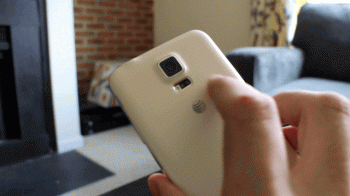
How to use the Galaxy S5 heart rate monitor (and why fitness fans should)
The Samsung Galaxy S5 is unique as a mobile device for several reasons, but perhaps none is more obvious that the inclusion of an easy-to-use heart rate monitor. The monitor, which takes the form of a sensor located on the rear of the device under the Galaxy S5’s camera, works together with Samsung’s S Health app to provide quick feedback on this vital aspect of cardiovascular health. Heart rate can be quickly calculated during a workout or whenever you would like to get a clear picture of just how much work your heart is undertaking.
What does the Galaxy S5 heart rate monitor do? Why should I use it?
Before we dive into using the Galaxy S5 heart rate monitor, let’s clear up exactly what it can and cannot do. As its name suggests, the sensor measures heart rate, which is a simple biometric parameter detailing how many times per minute your heart beats. Your resting heart rate might typically measure between 60 to 100 beats per minute (bpm).
During periods of strenuous activity this rate could increase to as high as 200 bpm, considered the maximum heart rate for most young adults. This maximum heart rate is the peak exertion an individual can experience during exercise without risking injury to the heart or other bodily systems. Maximum heart rate decreases depending on several factors, the biggest of which is age.
Understanding maximum heart rate and, further, the idea of heart rate zones for targeted training (these, again, will vary from person to person) gives us an idea of why access to a heart rate monitor can be useful for personal fitness. It can help prevent injury, allow for training regiments built around heart rate zones, and in turn aid in achieving certain fitness goals. Several online resources are available to learn more about target heart rates and even calculate zones based on age and other factors such as resting heart rate.
What the Galaxy S5’s heart rate monitor does not do is measure slightly more complicated metrics such as blood pressure and cardiac output, and therefore should not be considered a tool for providing armchair health diagnostics. While the GS5 will provide a general idea of how hard your heart is working at any given moment, you should consult a physician rather than your smartphone if you believe you may be suffering from a more serious condition.
How to use the Galaxy S5 heart rate monitor
So now that we understand the basics, let’s see how we go about using the Galaxy S5 to determine heart rate. The entire process couldn’t be easier and takes only a few seconds to provide a reading.
- Open the S Health app
- On the app’s home screen, tap Heart Rate.
- Place the tip of your index finger over the Galaxy S5’s heart rate sensor. The sensor will glow red.
- Wait for the reading to complete (this should only take a few seconds).
In some cases the Galaxy S5 may be unable to read your heart rate on the first try. The monitor is particularly susceptible to movement, moisture, and other human factors. To get better results, a few tips are recommended:
- Make sure your fingertip is relatively dry. Wipe off that sweat!
- Keep as still as possible when attempting to take a reading.
- Stay quiet. Excess noise can apparently interfere with the monitor’s function.
- If getting a reading is difficult, you might try holding your breath (or at least try to keep your breathing slow and steady).
The obvious drawback here is the fact that you will need to take a break from any physical activity to obtain a reading. This is no different, really, than the old school way of determining heart rate — that is, placing two fingers on the inside of your wrist and counting pulses over the duration of a set period of time. There is no debate that the GS5 makes for a more convenient reading by comparison. For those looking to actively track heart rate during exercise, you might consider investing in a dedicated heart rate band to be worn around the chest or wrist. In most cases, these ANT+ accessories will be able to be paired with the Galaxy S5 to provide realtime heart rate data.